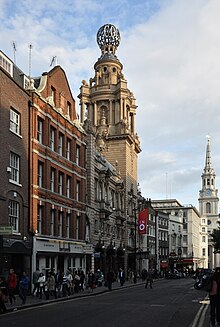| Doctor Ox's Experiment | |
|---|---|
| Opera by Gavin Bryars | |
 The London Coliseum, where the opera was first performed | |
| Librettist | Blake Morrison |
| Based on | Dr. Ox's Experiment by Jules Verne |
| Premiere | 15 June 1998 |
Doctor Ox's Experiment is an opera in two acts by Gavin Bryars. It has an English-language libretto by Blake Morrison after the novella of the same name by Jules Verne. It was first performed on 15 June 1998 at the London Coliseum by English National Opera (ENO) who co-commissioned the opera with BBC Television.
In the experiment of the title, Doctor Ox introduces a gas into a sedate and conservative Flemish village with the result that everyone and everything becomes speeded up and chaotic. (Ox's and his assistant's names combine to make Oxygėne, the French name for Oxygen.)[1]` The opera explores the conflict between Ox's advocacy of modernity and scientific and political change and Ygène's belief that liberation and the accompanying loss of the traditional rhythms of life might bring unhappiness.[1]
The music is predominantly slow-moving and quiet. Bryars allocated distinct voice types to the different types of roles: town elders, young lovers and scientists. He also included some unusual instruments in his orchestra: an oboe d'amore and an amplified jazz bass in the love scene, an electronic keyboard and a flugelhorn instead of trumpets in the brass section. The reception was mixed with several critics complaining of boredom while others wrote of members of the audience being entranced by the music.
